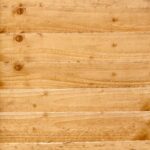When it comes to repainting woodwork, proper preparation is key to achieving a flawless and long-lasting finish. Prepping the woodwork ensures that the paint adheres properly, improves the overall appearance of the surface, and helps to prevent future issues such as peeling or chipping. Whether you’re looking to refresh the look of your home’s interior or restore outdoor wooden features, taking the time to prep the woodwork will make all the difference in the final result.
Woodwork can become worn, damaged, or coated with layers of old paint over time. Before diving into a new paint job, it’s important to assess the condition of the woodwork thoroughly. This involves identifying any areas that require repairs, whether it be filling in holes, fixing cracks, or addressing dents. By doing a thorough assessment beforehand, you can ensure that these imperfections are properly addressed during the prep stage.
To properly prep woodwork for repainting, gathering the necessary tools and materials is essential. From sandpaper and brushes to putty knives and paint strippers, having all of these items on hand will save time and allow for a more efficient process. In this article, we will provide a comprehensive checklist for all DIY enthusiasts who are eager to tackle their woodwork painting project.
By following these step-by-step guidelines on how to prep your woodwork before repainting, you can ensure that your finished project looks professional and stands up against wear and tear. From cleaning and removing old paint to sanding and repairing imperfections, each step plays an important role in achieving a smooth canvas for your new coat of paint. Get ready to transform your space by properly prepping your woodwork – read on for all you need to know.
Assessing the Condition of the Woodwork
Before repainting woodwork, it is crucial to assess its condition and identify any issues that need to be addressed. Proper assessment ensures that you can adequately prepare the wood surface, repair any damages, and achieve a smooth and flawless finish. Here are some steps to follow when assessing the condition of woodwork:
- Inspect for Rot or Decay: Carefully examine the wood for signs of rot or decay. Look out for soft spots, discoloration, or crumbling areas. If you find any, it is important to address these issues before proceeding with repainting. Remove any rotted or decayed wood using a chisel or scraper tool, and replace it with new sections.
- Check for Loose or Damaged Joints: Inspect the joints and connections between different pieces of woodwork, such as door frames or window sills. Look for any loose joints or gaps that could compromise the integrity of the structure. Tighten loose screws or nails, and use a quality adhesive to reinforce weak joints.
- Identify Cracks and Holes: Examine the wood surface closely for cracks, holes, or other imperfections. These may be caused by weathering, insects, or general wear and tear. Use a putty knife to fill small cracks with suitable wood fillers or epoxy-based patching compounds. For larger holes, consider using wooden dowels or structural repairs for added strength.
- Evaluate Water Damage: Check if there are any signs of water damage on the woodwork surface such as staining or warping. If present, determine whether the source of moisture has been resolved before proceeding with repairs. Dry out affected areas thoroughly and replace severely damaged sections if necessary.
- Look for Paint Failure: Assess how well the existing paint is holding up on the wood surface by checking for peeling, flaking, or blistering paint. These issues indicate paint failure and will need to be addressed before repainting. Scrape off any loose or damaged paint using a scraper tool or sandpaper until you reach a sound surface.
By thoroughly assessing the condition of the woodwork, you can identify specific areas in need of repair and ensure that your painting project starts with a solid foundation. This step is crucial for achieving a professional-looking finish that will last for years to come. Remember to address any identified issues before moving on to the preparation and painting stages.
Gathering the Necessary Tools and Materials
When preparing woodwork for repainting, it is essential to gather the necessary tools and materials beforehand to ensure a smooth and efficient process. Having all the right equipment at hand will save time and frustration during the project. Here is a comprehensive checklist for the DIY enthusiast:
- Protective Gear: Prioritize your safety by wearing protective gear such as safety goggles, gloves, and a dust mask. These items will shield you from harmful chemicals, dust, and debris.
- Scrapers and Putty Knives: These tools are crucial for removing old paint, dirt, and loose materials from the woodwork surface. Different sizes of scrapers and putty knives will come in handy for various areas and levels of paint removal.
- Paint Strippers: Depending on the type of paint used on the woodwork, choose an appropriate paint stripper that matches your needs. It can be a liquid or gel-based stripper or even a heat gun for stubborn layers of paint.
- Sandpaper: Invest in different grits of sandpaper to effectively smooth out the woodwork surface before painting. Coarse-grit sandpaper (around 80-100) helps remove roughness and imperfections, while finer grits (around 200-400) provide a polished finish.
- Wood Filler or Putty: To repair any cracks, holes, or dents on the woodwork, have some wood filler or putty on hand. Choose a filler that matches the color of your woodwork to ensure seamless repairs.
- Cleaning Materials: Before applying any new paint, clean the woodwork thoroughly to remove dirt, grease, and grime. Have cleaning supplies such as mild detergent or vinegar solutions and clean cloths ready for this step.
- Painter’s Tape: Use painter’s tape to protect areas you don’t want to be painted or where you want clean lines between different colors or sections.
- Primer: A quality primer is essential for achieving a smooth and long-lasting finish. Depending on the type of woodwork and paint you are using, choose an appropriate primer that adheres well to the surface.
- Paint: Selecting the right paint can make a significant difference in the overall appearance and durability of your woodwork. Consider factors such as the type of wood, indoor or outdoor use, and personal preference when choosing between oil-based or latex paint.
- Brushes, Rollers, and Paint Trays: Have a variety of brushes (angled brush for corners), rollers (for larger areas), and paint trays ready for application. Choose high-quality brushes and rollers to ensure even coverage and a professional-looking finish.
By having all these tools and materials on hand, you will be well-prepared to tackle your woodwork repainting project with confidence. Remember to follow safety precautions, read product labels for proper usage instructions, and take your time to achieve the best possible results.
Cleaning and Removing Old Paint
Once you have assessed the condition of the woodwork and gathered all the necessary tools and materials, it is time to clean and remove the old paint from the surface. This step is crucial to ensure a smooth and even finish for your repainting project. There are several techniques that you can use to effectively strip and remove old paint from woodwork.
One popular method is using chemical paint strippers. These products work by breaking down the chemical bond between the paint and the surface, making it easier to peel or scrape off. It is important to follow the instructions provided by the manufacturer when using chemical strippers, as they can be toxic. Make sure to work in a well-ventilated area, wear protective gloves and goggles, and dispose of any waste properly.
Another technique for removing old paint is heat stripping. This method involves using a heat gun or infrared heater to soften the paint, making it easier to scrape off. Be cautious when using heat stripping methods, as excessive heat can damage the wood or pose a fire hazard. Always keep the heat gun moving to avoid scorching or burning the wood.
For smaller areas or intricate details where chemical or heat stripping may not be suitable, mechanical methods such as sanding or scraping can be used. Sanding involves using sandpaper or a power sander to remove layers of paint from the surface. Start with coarse-grit sandpaper and gradually move on to finer grits for a smoother finish. Scraping, on the other hand, involves using a putty knife or scraper tool to manually scrape away the old paint.
Whichever method you choose, it is essential to take safety precautions such as wearing protective gear and working in a well-ventilated area. Additionally, always test your chosen method on a small inconspicuous area before applying it to the entire woodwork surface, as different types of paint and wood may react differently.
| Technique | Description |
|---|---|
| Chemical Paint Stripping | Using chemical products to break down the bond between paint and surface for easier removal. |
| Heat Stripping | Using heat to soften the paint, making it easier to scrape off. |
| Sanding | Using sandpaper or a power sander to mechanically remove layers of paint. |
| Scraping | Manually scraping away old paint using a putty knife or scraper tool. |
Remember that patience and attention to detail are key when cleaning and removing old paint. Take your time and ensure that all traces of the old paint are removed before moving on to the next step in the woodwork repainting process.
Sanding and Smoothing the Surface
Once you have assessed the condition of the woodwork and gathered all the necessary tools and materials, it is time to move on to the next crucial step in prepping woodwork for repainting – sanding and smoothing the surface. This step is essential to achieve a flawless canvas that will result in a professional finish.
To start sanding, you will need the following tools and materials:
- Sandpaper: Choose the appropriate grit depending on the condition of the woodwork. Coarser grits like 60 or 80 can be used for removing old paint or rough surfaces, while finer grits like 120 or 150 are ideal for smoothing out imperfections and preparing for painting.
- Sanding block or sander: While sanding by hand with a sanding block can work well for smaller areas, using an electric sander can speed up the process for larger surfaces. Make sure to choose an orbital sander with variable speeds and use it with caution to avoid damaging the wood.
- Dust mask and safety goggles: Sanding can create fine dust particles that can be harmful if inhaled. Protect yourself by wearing a dust mask over your mouth and nose, as well as safety goggles to shield your eyes from any debris.
Before you start sanding, make sure to remove any loose paint or grime from the surface using a brush or vacuum cleaner. Once cleaned, follow these steps:
- Start with coarse-grit sandpaper: Begin by using coarse-grit sandpaper (60 or 80) to remove any remaining paint, rough patches, or blemishes on the woodwork. Sand along the grain of the wood in smooth motions, applying even pressure.
- Transition to finer-grit sandpaper: After removing most of the imperfections with coarser grits, switch to a finer-grit sandpaper (120 or 150) to achieve a smoother finish. Sand the woodwork in the direction of the grain, ensuring that you don’t miss any spots.
- Check for smoothness: Regularly inspect your progress by running your hand over the sanded surface. Any rough areas should be further sanded until they feel smooth and consistent with the rest of the wood.
- Remove dust: Use a soft bristle brush or a tack cloth to remove any sanding dust from the surface. It is crucial to have a clean and dust-free canvas before moving on to the next steps.
By thoroughly sanding and smoothing the surface, you are creating an optimal base for paint adhesion and achieving a professional finish to your woodwork project. Taking the time to carry out this step properly will ensure that your final paint job looks flawless and lasts for years to come.
Filling and Repairing Imperfections
When prepping woodwork for repainting, it’s important to address any imperfections such as holes, cracks, and dents. These blemishes not only affect the aesthetic appeal of the woodwork but also impact the overall quality of the painted surface. In this section, we will discuss how to correctly fill and repair these imperfections to ensure a flawless finish.
Identifying and Assessing Imperfections
Before starting any repairs, it is crucial to carefully inspect the woodwork and identify all areas in need of attention. Look for visible holes, cracks, or dents that may have been caused by age, moisture damage, or general wear and tear. Take note of the size and depth of each imperfection as this will determine the appropriate materials and techniques needed for repair.
Choosing the Right Filling Materials
Once you have identified the imperfections, it’s time to gather the necessary filling materials. There are several options available, including wood filler, spackle, epoxy paste, or even homemade mixtures using sawdust and glue. Consider factors such as the type of woodwork being repaired and its location (interior or exterior) when selecting your filling material.
Repair Techniques
The repair techniques will vary depending on the type and size of imperfections. For small holes or cracks in wooden surfaces, applying a thin layer of filler using a putty knife can be sufficient. For larger holes or areas with significant damage, it may be necessary to first reinforce with mesh or tape before applying filler to ensure a durable repair.
After applying the filler, allow it to dry fully according to manufacturer instructions. Once dry, use sandpaper to smooth out any unevenness until the surface is level with the surrounding woodwork. This step is crucial in achieving a seamless finish that blends well with the rest of the project.
Priming the Woodwork
Before you can begin painting your woodwork, it is crucial to apply a layer of primer. Priming not only helps to ensure the paint adheres properly to the surface, but it also provides an extra layer of protection for the wood. In this section, we will discuss how to choose the right primer for your woodwork and share some correct application techniques.
When choosing a primer for woodwork, there are a few important factors to consider. Firstly, make sure to select a primer that is specifically designed for use on wood surfaces. This type of primer will have the necessary adhesion properties and durability needed for long-lasting results. Additionally, consider whether you want a water-based or oil-based primer.
Water-based primers are easy to clean up with soap and water, dry quickly, and have low levels of volatile organic compounds (VOCs). They work well on bare or previously painted wood surfaces. On the other hand, oil-based primers provide excellent stain-blocking capabilities and create a strong bond with the wood. They are best suited for high-moisture areas or if the wood has stains or knots that need to be sealed.
Once you have chosen the appropriate primer, it’s time to apply it correctly. Start by thoroughly cleaning the surface of any dust or debris using a damp cloth. Next, use a brush or roller specifically designed for priming to apply an even coat of primer onto the woodwork. Be sure to follow the manufacturer’s instructions regarding drying time between coats and number of recommended coats.
Proper ventilation is essential during this process as primers can contain strong odors and fumes. Open windows or use fans to keep fresh air circulating in the room. Lastly, allow sufficient drying time before moving on to applying paint over the primed surface.
By choosing the right primer and applying it correctly, you are setting the foundation for a successful repaint job. The primer will enhance the adhesion and longevity of the paint, resulting in a professional-looking finish that will stand the test of time. So, take your time in selecting the right primer and following correct application techniques to achieve the best possible outcome for your woodwork project.
Choosing the Perfect Paint
When it comes to repainting woodwork, selecting the right paint is crucial for achieving a long-lasting and professional finish. With so many options available on the market, it’s important to consider a few key factors before making your decision.
Firstly, you’ll want to choose a paint that is specifically formulated for wood surfaces. Woodwork is prone to expanding and contracting with changes in temperature and humidity, so using a paint that can accommodate these movements is essential. Look for paints labeled as “wood paint” or “enamel paint” as they are designed to withstand these conditions.
Another important consideration is the finish of the paint. Woodwork typically benefits from a smooth and glossy finish as it not only adds aesthetic appeal but also provides added durability and protection. Satin or semi-gloss finishes are popular choices for woodwork as they strike the perfect balance between elegance and practicality.
Next, take into account the type of wood you will be painting. Different woods have varying levels of grain texture and absorbency, which can affect the outcome of your paint job. For example, hardwoods like oak may require a different type of paint compared to softwoods like pine. Consult with your local home improvement store or an expert in order to find the best paint option for your specific wood type.
Lastly, consider any environmental concerns when selecting your paint. If you’re looking for an eco-friendly option, there are paints available that are low in volatile organic compounds (VOCs). These paints release fewer harmful chemicals into the atmosphere during application and drying.
By carefully considering these factors, you can ensure that you choose the perfect paint for your woodwork project. Taking the time to select the right paint will not only enhance the overall appearance of your wood surfaces but also contribute to their longevity and resilience over time.
Applying the Paint
Once you have prepped your woodwork by cleaning, removing old paint, sanding, and repairing imperfections, it’s time to apply the paint. This step-by-step guide will provide you with the instructions you need to achieve a smooth and even finish on your woodwork.
Step 1: Choose the Right Paint
Before applying the paint, it is important to choose the right type of paint for your woodwork. Consider factors such as the type of wood, location of the woodwork (interior or exterior), and desired finish (matte, satin, or gloss). Water-based latex paints are often recommended for their durability and ease of use. Make sure to consult with a professional at your local hardware store to ensure you select the best paint for your specific project.
Step 2: Prepare Your Tools
To apply the paint smoothly and evenly, gather all the necessary tools. These may include a high-quality synthetic brush, a small roller or foam roller for larger surfaces, a tray or bucket for paint, painter’s tape to protect adjacent surfaces from accidental paint splatter, and a drop cloth to protect flooring or furniture. Make sure that all tools are clean and in good condition before starting.
Step 3: Prime as Needed
If you are painting bare wood or if your woodwork has been repaired extensively, it is advisable to prime before applying the paint. Priming helps create an even surface and improves adhesion of the paint. Apply primer using either a brush or roller according to manufacturer instructions. Let it dry completely before moving on to the next step.
Step 4: Begin Painting
Start by cutting in along edges and corners with a brush. Use smooth strokes in one direction to avoid visible brush marks. Then fill in larger areas using a brush or roller-working in small sections at a time. Apply the paint evenly, making sure to spread it out without leaving any drips or blobs. Use long, even strokes for a professional finish.
Step 5: Allow the Paint to Dry
After applying one coat of paint, allow it to dry completely according to the manufacturer’s instructions. Depending on the type of paint and environmental conditions, this may take several hours or even overnight. Make sure to avoid touching or disturbing the painted surface until it is fully dried.
Step 6: Apply Additional Coats (If Necessary)
Once the first coat is dry, assess if additional coats are needed. If you desire a more opaque or vibrant finish, apply a second coat using the same techniques as before. Allow each coat to dry completely before applying another.
By following these step-by-step instructions for applying paint, you can achieve a smooth and even finish on your woodwork. Remember to be patient and take your time in order to ensure high-quality results.
Caring for Repainted Woodwork
In conclusion, once you have successfully repainted your woodwork, it is important to take proper care of the newly painted surfaces in order to maintain their appearance and protect them from damage. Here are some tips to help you do just that.
Firstly, avoid any harsh cleaning products or abrasive materials when cleaning your repainted woodwork. Gentle cleaners and a soft cloth or sponge should be sufficient to keep the surfaces clean without causing any damage to the paint. Avoid using scrub brushes or rough sponges which could scratch or wear away the paint.
Secondly, be cautious with any objects that may come into contact with your painted woodwork. Avoid placing sharp or heavy objects directly on the surface as they can cause scratches or dents. It is also a good idea to use coasters under glasses and trivets under hot dishes to prevent any heat or moisture damage.
Additionally, consider adding a protective coating to your repainted woodwork for extra durability and longevity. There are various clear topcoats available on the market that can provide an extra layer of protection against stains, fading, and even UV rays. Be sure to choose a topcoat specifically designed for wood surfaces and follow the manufacturer’s instructions for application.
Lastly, regular maintenance is key in keeping your repainted woodwork looking its best. Inspect the surfaces periodically for any signs of wear or damage and address them promptly to avoid further issues. Touch up any chips or scratches with matching paint as soon as you notice them in order to maintain a seamless finish.
By following these tips and taking proper care of your repainted woodwork, you can enjoy beautiful and long-lasting results for years to come. Remember that investing time and effort into prepping and caring for your woodwork will ultimately pay off in maintaining its appearance and protecting it from damage in the long run.
Frequently Asked Questions
How do you prepare previously painted wood for repainting?
When preparing previously painted wood for repainting, it is important to start by cleaning the surface thoroughly. Dust, dirt, and grime should be removed using a mild detergent and water solution. After cleaning, any loose or peeling paint should be scraped off with a putty knife or scraper.
If there are any rough areas or imperfections on the wood, they can be smoothed out using sandpaper or a sanding block. It is also essential to ensure that the surface is completely dry before proceeding with primer or paint application.
Does woodwork need to be sanded before painting?
Yes, woodwork generally needs to be sanded before painting. Sanding helps create a smooth and even surface for the paint to adhere to. It removes any roughness, imperfections, or old layers of paint that may affect the final finish.
Before sanding, it is important to clean the woodwork thoroughly to remove dust and grime. Sanding can be done using medium-grit sandpaper or sanding blocks in order to achieve the desired smoothness. After sanding, make sure to wipe away any dust particles before applying primer or paint.
How do you prep wood trim for painting?
Prepping wood trim for painting involves several steps. Firstly, it is recommended to clean the trim thoroughly using diluted detergent and water solution or a gentle cleaner specifically designed for wood surfaces.
This will remove any dirt, grease, or stains that could interfere with the paint adhesion. Next, inspect the trim for any cracks, holes, or imperfections that need repair; these should be filled with an appropriate wood filler and allowed to dry completely before proceeding further.

Hi everyone! I’m a woodworker and blogger, and this is my woodworking blog. In my blog, I share tips and tricks for woodworkers of all skill levels, as well as project ideas that you can try yourself.





